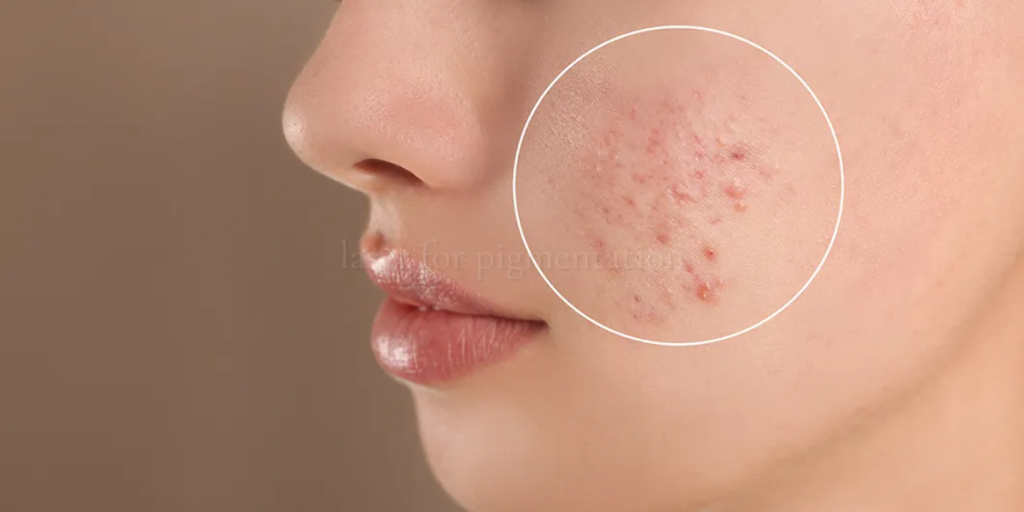Laser for Pigmentation and AI Skin Analysis — The Next Big Thing in Beauty Tech
The beauty and skincare industry is undergoing a remarkable transformation. What was once centered around traditional treatments and guesswork has evolved into a data-driven, technology-powered field. At the forefront of this revolution are two innovations reshaping how we understand and care for our skin — Laser for Pigmentation and AI Skin Analysis.
Together, they embody the future of personalized skincare, combining medical precision with digital intelligence to deliver visible, lasting results.
Understanding Pigmentation — The Science Behind Skin Tone
Pigmentation refers to the natural color of your skin, determined primarily by a pigment called melanin. Melanin protects your skin from UV rays, but when its production becomes uneven — due to sun exposure, hormonal changes, genetics, or inflammation — it leads to hyperpigmentation.
Common forms of pigmentation include:
- Melasma: Often triggered by hormones or pregnancy.
- Sunspots / Age spots: Caused by prolonged UV exposure.
- Post-inflammatory hyperpigmentation (PIH): Occurs after acne or skin injuries.
These conditions can affect one’s confidence, especially when topical creams or home remedies fail to show results. That’s why laser treatments for pigmentation have become a trusted, science-backed solution.
Laser for Pigmentation — Precision Treatment for Uneven Skin Tone
How Laser Technology Works
Laser treatment for pigmentation uses concentrated light energy to target and break down excess melanin in the skin. The pigment absorbs this laser energy, fragments into smaller particles, and is naturally eliminated by the body’s immune system. Over time, the treated area appears clearer, smoother, and more even-toned.
Unlike harsh peels or bleaching creams that may irritate the skin, laser pigmentation removal offers a controlled, non-invasive approach. The precision of laser wavelengths allows dermatologists to treat only the affected areas while leaving the surrounding skin untouched.
Types of Laser Treatments for Pigmentation
1. Q-Switched Nd:YAG Laser
A well-established option for treating deep pigmentation such as freckles, sunspots, and melasma. It emits short bursts of energy that effectively shatter pigment clusters without harming the skin’s surface.
2. Pico Laser
The Pico Laser uses ultra-short pulses measured in picoseconds, making it one of the most advanced options for pigmentation removal. It not only removes stubborn pigmentation but also promotes collagen regeneration, resulting in brighter, smoother skin.
3. Fractional Laser
This method targets both pigmentation and texture issues. It rejuvenates the skin by creating micro-injuries that trigger collagen production — improving tone, elasticity, and overall skin quality.
Each of these treatments is tailored to the patient’s skin type, pigmentation depth, and aesthetic goals, ensuring a personalized approach to clearer skin.
AI Skin Analysis — The Smart Way to Understand Your Skin
Before any laser session begins, AI-powered skin analysis plays a crucial role in diagnosing skin conditions with remarkable accuracy. Using advanced imaging systems and machine learning algorithms, AI can evaluate multiple skin parameters such as:
- Pigment depth and distribution
- Wrinkle formation and elasticity
- Pore size, hydration levels, and oil balance
- Sensitivity and potential inflammation zones
This detailed digital assessment acts as a “skin blueprint”, helping dermatologists and aestheticians design treatments based on real data rather than visual inspection alone.
How AI Improves Accuracy
AI skin analysis systems compare the user’s results against large dermatological databases to identify patterns and predict future concerns. For example, it can detect early pigmentation beneath the skin surface — even before it becomes visible — allowing preventive treatment through laser therapy.
By integrating AI diagnostics with laser technology, clinics can ensure that every treatment session is safer, more effective, and uniquely personalized.
The Power of Combining AI Skin Analysis and Laser Pigmentation Treatment
When AI-driven skin analysis meets laser-based pigmentation treatment, the results are truly transformative.
Here’s how they complement each other:
- Personalized Treatment Plans: AI provides detailed skin data, allowing dermatologists to select the optimal laser type, intensity, and wavelength for each individual.
- Real-Time Monitoring: AI systems can track treatment progress, compare before-and-after images, and adjust protocols for consistent improvement.
- Safety and Precision: By understanding a person’s skin sensitivity and melanin levels, AI reduces the risk of overexposure or side effects.
- Enhanced Outcomes: Combining scientific analysis with targeted laser therapy ensures faster healing and visibly clearer results.
This synergy between digital intelligence and dermatological science is redefining how skincare treatments are planned and delivered.
Why Laser for Pigmentation Is the Future of Aesthetic Dermatology
The growing popularity of laser pigmentation removal isn’t just a passing trend — it’s the next step in advanced skin health management.
Here’s why experts consider it the future:
- Targeted and Effective: Laser treatments work at the root cause — excess melanin — delivering longer-lasting results.
- Minimal Downtime: Most modern laser systems are gentle enough for quick recovery, allowing patients to resume normal routines within a day.
- Safe for All Skin Types: When guided by AI analysis, laser treatments can be customized for diverse skin tones and conditions.
- Visible Transformation: Results are noticeable after just a few sessions, with continued improvement over time.
- Scientifically Proven: Supported by dermatological research and global clinical studies.
As beauty merges with technology, consumers are shifting from generic skincare products to data-driven, results-oriented treatments like laser pigmentation therapy.
The Future of Beauty Tech — Personalized, Predictive, and Precise
The collaboration between AI skin analysis and laser pigmentation treatments marks a defining era in beauty tech. It’s not just about achieving fairer skin; it’s about understanding your skin’s biology and addressing its unique needs with precision.
In the near future, we can expect even smarter diagnostic systems, adaptive laser devices, and AI tools capable of tracking long-term skin health. This new era will empower both professionals and clients to make informed, evidence-based skincare choices.
Final Thoughts
Laser for Pigmentation and AI Skin Analysis together represent more than just technological advancement — they symbolize a shift toward intelligent, personalized beauty care. By combining the precision of lasers with the analytical power of artificial intelligence, the skincare industry is finally achieving what consumers have always wanted: treatments that are effective, safe, and tailored to the individual.
The future of skincare isn’t found in a bottle — it’s found in technology that understands your skin better than ever before.
Ready to Transform Your Skin? Contact Our Team Today
If you’ve been struggling with dark spots, uneven skin tone, or pigmentation that just won’t fade — it’s time to explore the power of laser for pigmentation guided by AI skin analysis.
Our experienced skincare specialists use cutting-edge laser technology and advanced AI diagnostics to design treatments tailored to your unique skin needs. From the first consultation to your final session, we ensure safe, comfortable, and visible results.
Book your personalized skin analysis and laser consultation today. Let our experts help you reveal clearer, brighter, and healthier-looking skin.
Contact our team for more details or to schedule your appointment.
 Skip to content
Skip to content





